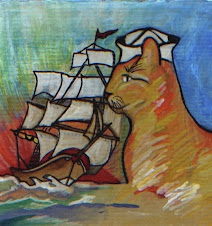
Saturday, December 25, 2010

Saturday, November 27, 2010
Verdant Packaging
 I posted this topic at my personal blog, but it certainly belongs here, too. May I direct your attention to Verdant Packaging?
I posted this topic at my personal blog, but it certainly belongs here, too. May I direct your attention to Verdant Packaging?
Monday, November 8, 2010
Real Climate
In my Quantitative Methods for Environmental Science course, we've begun our study of climate change. I'm really finding it interesting--I knew the basics, but I'm loving delving deeper into the equations and understanding the geophys/chemistry behind it. (Both links above from our professor, Jim Williams)
Sunday, November 7, 2010
Plastic, Trash, Animals Dying, and Humans Changing


Sunday, October 24, 2010
GPS devices in Rhino horns
Sunday, October 10, 2010
Rhino Poaching up 2000% in the past 3 yrs

Monday, September 6, 2010
How to Green your Event
HOW TO GREEN YOUR EVENT
Tips and resources to help make your event more environmentally friendly
In order to promote sustainability, where possible, all events should serve at least 50% plant-based food items. These are low on the food chain and require much fewer resources than animal-based food items. We also recommend that food be locally grown, organic, and minimally processed to promote more efficient resource use.
RECYCLING AND TRASH CANS
Make sure that event attendees have easy access to trash cans and recycling bins.
BRING-YOUR-OWN-CUP
Your guests can easily bring a cup to your event as well. Not only will your event then produce less waste, but you will also save money by not purchasing disposable cups. Plus, everyone will know which glass is theirs.
SAVE ELECTRICITY
Don‟t forget to turn off any lights or electronic equipment once you are done using them.
FOOD SELECTION
Some ideas for food items that meet the 50/50 criteria include:
Hummus and babaganoush spreads with crackers, pita, or bread
Snacks such as fruit, nuts, chips, salsa, and guacamole
Vegetable sushi rolls
Veggie burgers
Vegetable soups and chili without a cream base
Vegetable stir fries
Vegan salads such as pasta and bean salads
Vegetarian sandwich fixings, including baked tofu, avocadoes, cucumbers, and tomatoes
Vegetable or lentil curries
SERVINGWARE
No need to go out and buy plastic plates and styrofoam cups for your event. Instead, purchase biodegradable servingware and reduce the amount of trash your event produces. For small events, check out Whole Food's selection of biodegradable servingware. For larger events, search for a green servingware provider, preferably local.
Friday, September 3, 2010
2010 Year of International Biodiversity
Thursday, April 29, 2010
The Uniform Project
One woman has done just that, in epic proportions, in order to raise money to send children to school in India.
Her name is Sheena Matheikan, and today is the last day of her year-long project to wear a single dress (well, she has 5 of the same dress) all year long, but show that it doesn't have to be boring to do so. I love the creativity of this project. Enjoy watching the year, and feel free to donate during her last day!
Uniform Project Picture Book from The Uniform Project on Vimeo.






